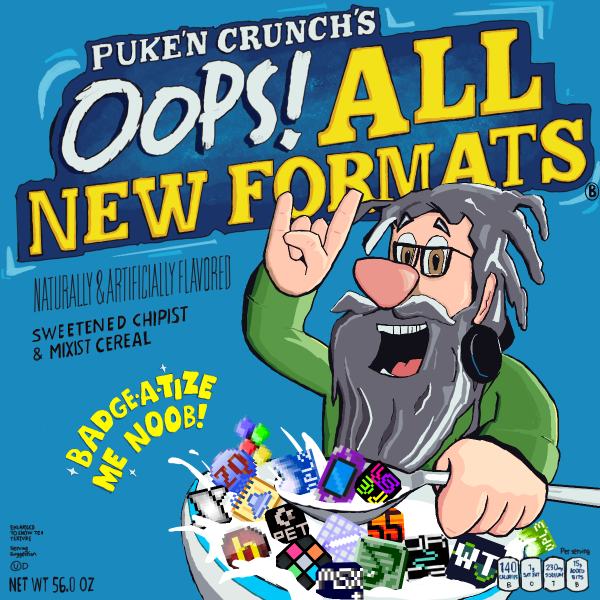::|CONTENTS
- Overview
- Pulse Channel
- Triangle Channel
- Noise Channel
- DPCM
Overview
The Famicom or Family Computer was released in July of 1983 in Japan as well as most of Asia, the Philippines, Taiwan, Vietnam, and Singapore. In South Korea is was known as the Comboy, where it was marketed by Hyundai Electronics. The popularity of the Famicom in Japan eventually brought about the North American-European release of the
NES. Nintendo had success with arcade games in the early 1980s which lead to plans of a cartridge based console system, designed by Masayuki Uemura. The Famicom was sold with the Arcade classics Donkey Kong, Donkey Kong Jr. and Popeye. In the beginning the Famicom had some trouble gaining popularity due to a bad chipset but the product was recalled and with a new motherboard. By the end of 1984 it was the best selling game console in Japan.
The NES NTSC sound chip 2A03 was made by Ricoh. The NES board has five sound channels, two pulse wave, one triangle wave, one white noise and a sample channel. The Famicom had two additional cartridge pins to for external sound enhancements, from the Famicoms Disk System, by rerouting traces in the NES expansion slot you would effectively be able to add expansion sound to the
NES.
Pulse Channel
The pulse channel (similar to the square wave) has volume control of sixteen levels and a variable duty cycle of 12.5%, 25%, 50%, 75%, with hardware pitch pending supporting frequencies from 54 Hz to 28 kHz. Pulse waves are commonly used as lead instruments because of the ability two combine the two channels into one lead sound or combined as chords. It also has a neat 'phasing' feature by playing two different notes to create a duophonic sound by playing the same notes or frequencies on both channels while one channel has a slight pitch bending effect assigned to it. This creates a duophonic sound and/or a sound similar to a synthesizers oscillator.
Triangle Channel
The triangle channel (similar to a sine wave) is a fixed volume and is capable of frequencies from 27 Hz to 56 kHz. (Volume may be changed by increasing or decreasing the DC levels of the DPCM channel or by the pitch of the triangle channel itself.) Like the square wave. The triangle wave produces odd harmonics (as opposed to even harmonics), but because the triangles higher harmonics the roll off is much faster than the square wave (or pulse wave) which creates a sound closer to even harmonics, this could explain the pleasing sound a triangle has when used as lead instrument.
Noise Channel
The noise channel produces white noise. White noise is a random flat signal that crosses over frequencies, also called spectral density.
White noise has the ability to cut through sound as well as absorbs other sounds (frequencies). The NES noise channel has sixteen-volume levels and has two modes. Each mode can be adjusted via the linear feedback shift register at sixteen programmed frequencies. There are two modes of playback: Short pattern, and long pattern. Long pattern likens to the term "white noise". It is a hissing or crunching noise. Short pattern's output is not as random as long pattern and outputs certain detuned high frequencies or more defined sounds; due to less randomness.
DPCM
The DPCM channel has six bits of range and uses 1-bit delta encoding at sixteen preprogrammed samples rates from 4.2 kHz to 33.5 kHz. This channel was also capable of playing standard pulse-code modulation (PCM) sound by writing individual 7-bit values at timed intervals.


